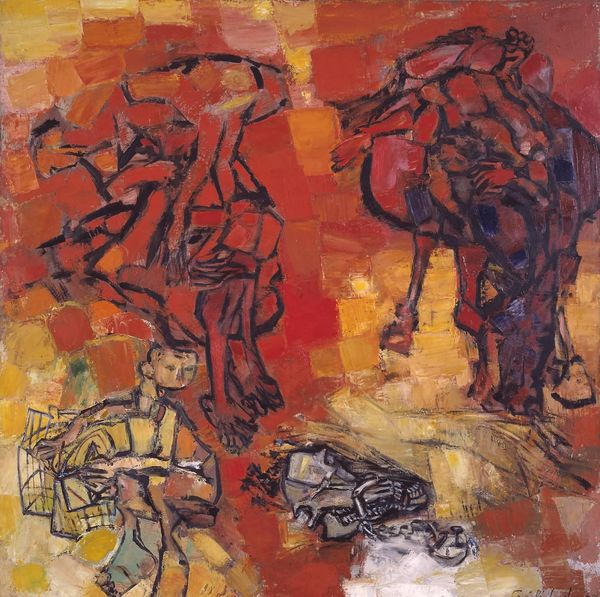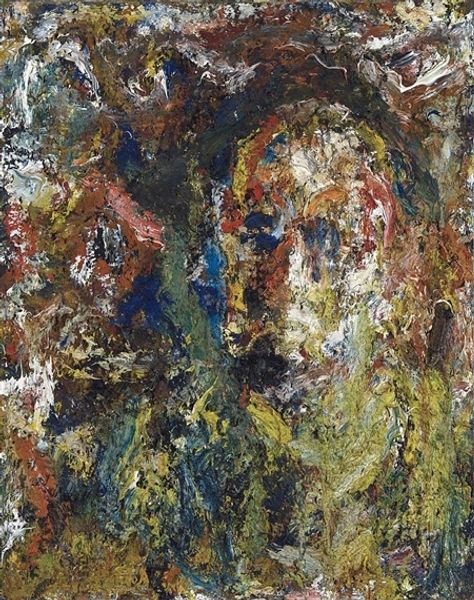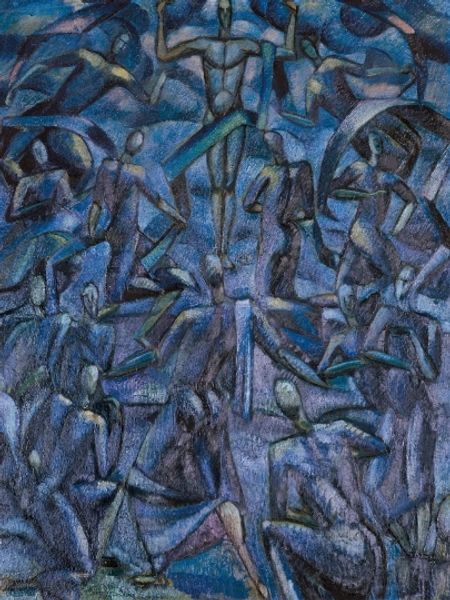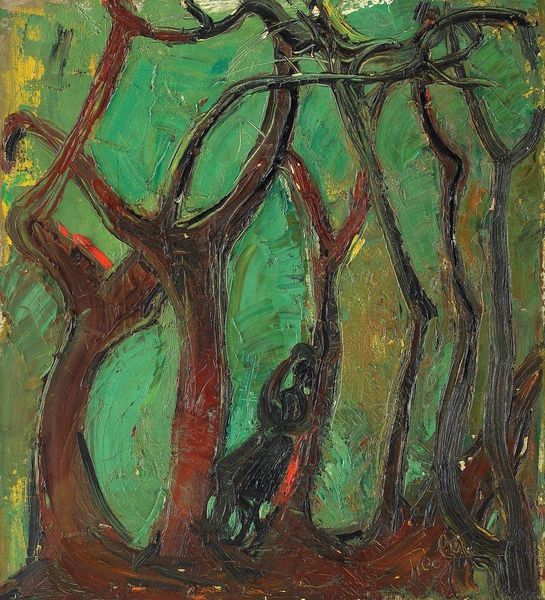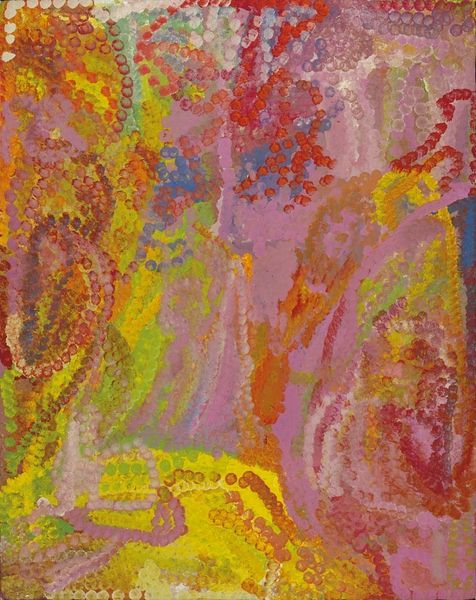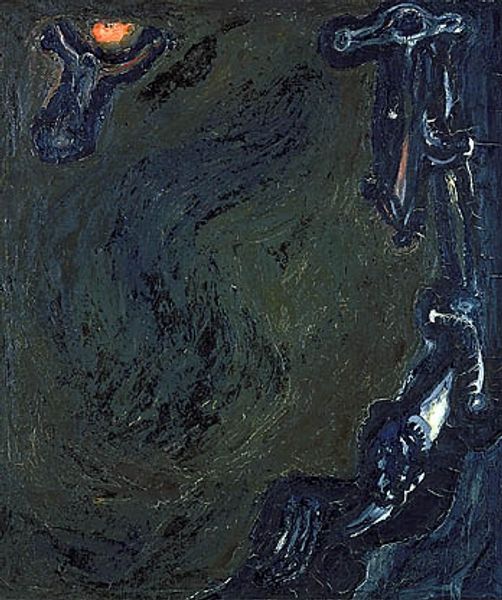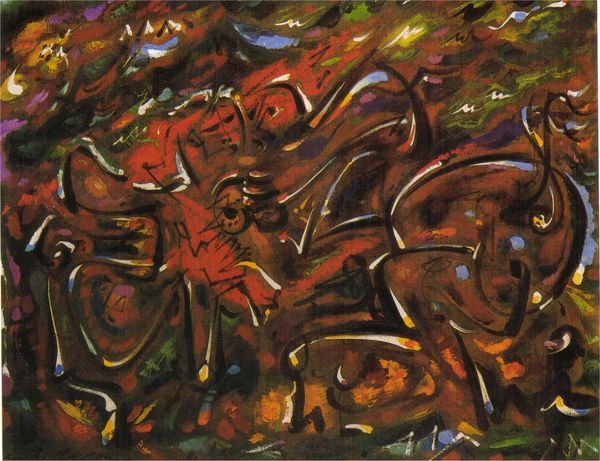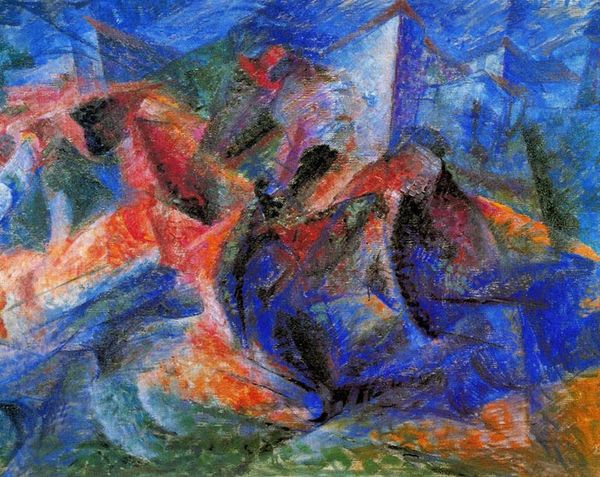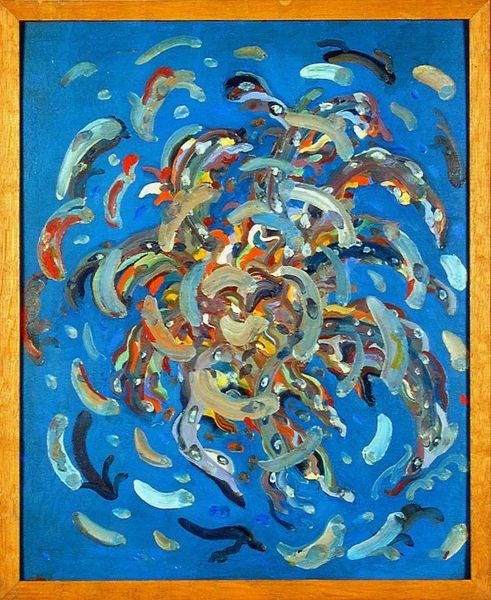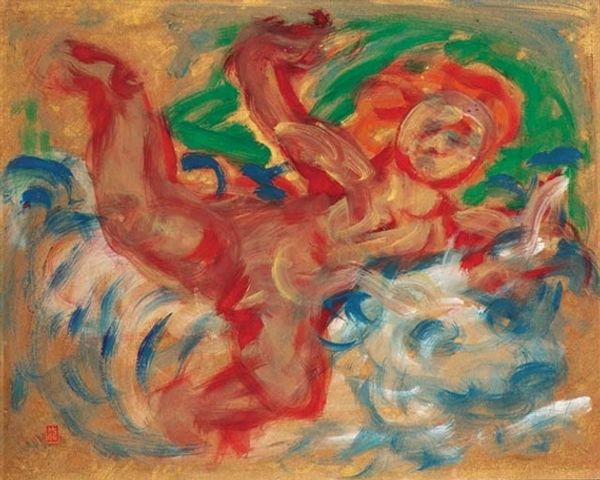
matter-painting, acrylic-paint, impasto
#
abstract-expressionism
#
abstract expressionism
#
matter-painting
#
acrylic-paint
#
figuration
#
impasto
#
acrylic on canvas
Copyright: Vilen Barsky,Fair Use
Curator: This piece, titled "A Dance of Dragons," dates back to 1959 and was created by Vilen Barsky using acrylic paint and matter-painting techniques. It’s a potent example of abstract expressionism, characterized by impasto. What’s your immediate response? Editor: Visceral. Chaotic. I’m immediately drawn to the dense texture and how the raised surfaces of the figures create dramatic shadows. The colour palette, predominantly blues and ochres, also contributes to a feeling of both primordial depth and turbulent activity. Curator: I see primordial struggles here, echoing ancient myths. The dragon, a symbol often representing chaos, power, and the untamed forces of nature, becomes a lens through which we might contemplate the individual's conflict against larger, perhaps unconscious, powers. Do you think Barsky uses this icon as a projection of inner turmoil? Editor: Absolutely. The lack of distinct forms almost dissolves the 'dragons' into a raw, almost geological terrain, which heightens the sense of an internal struggle manifesting itself materially. It challenges our perception with it's structure as well as its imagery. Curator: Barsky also makes the dragons somewhat relatable through their almost figural construction, thus transforming this mythical creature into something disturbingly human and recognisable. This reminds me how we create our own 'monsters'. Editor: Precisely, and the thick impasto adds an almost sculptural quality. Each brushstroke is deliberate, laden with intent and raw emotion. Its tactile nature enhances this effect, engaging more senses and giving more insight. Curator: Well, after exploring the painting’s form, theme, and iconographical significance, I appreciate how its expressionistic abstraction remains grounded by the tangible elements it portrays, leaving open spaces for re-interpretation across history. Editor: For me, analyzing its compositional tension alongside the use of colour reveals a deeper reflection of personal conflict transformed into something visually powerful. A fascinating study of form expressing substance!
Comments
No comments
Be the first to comment and join the conversation on the ultimate creative platform.
